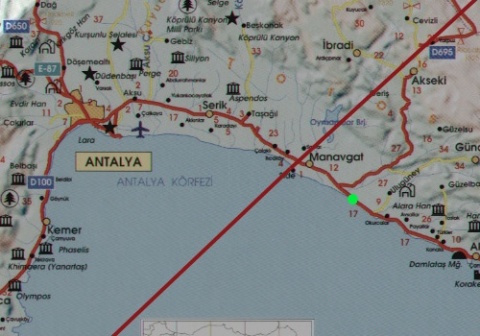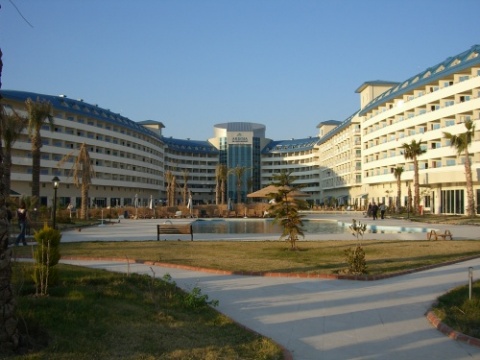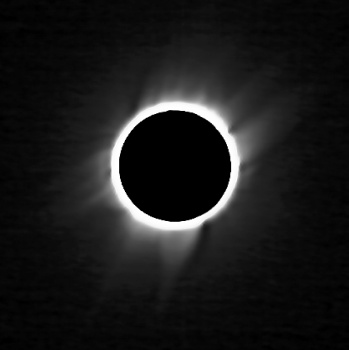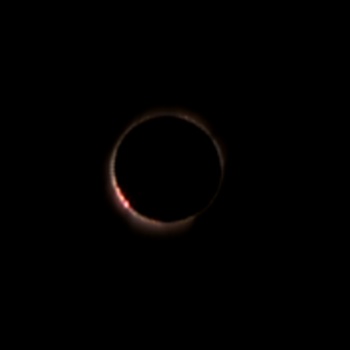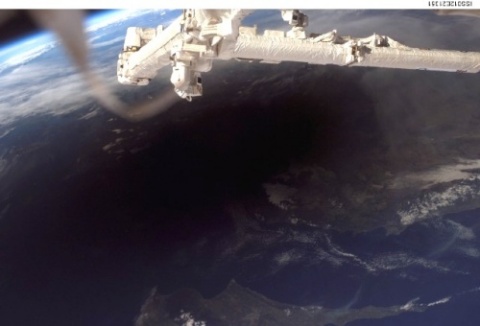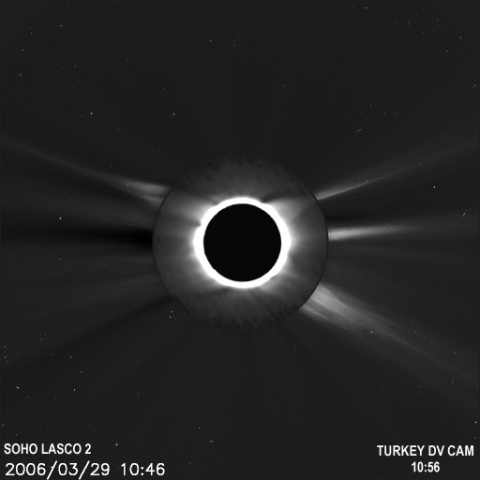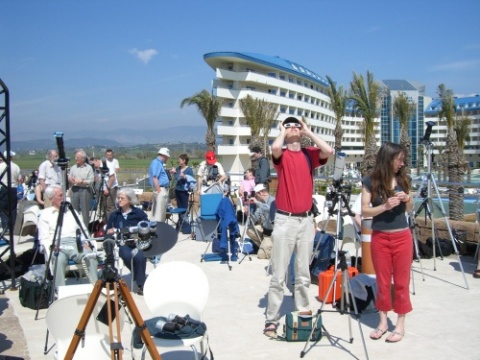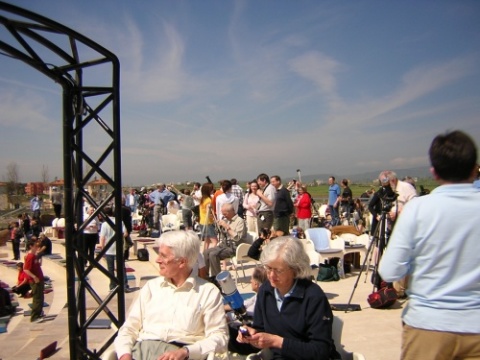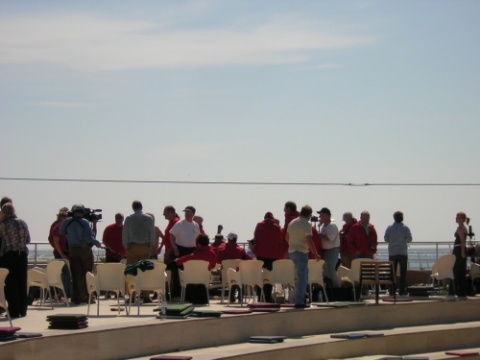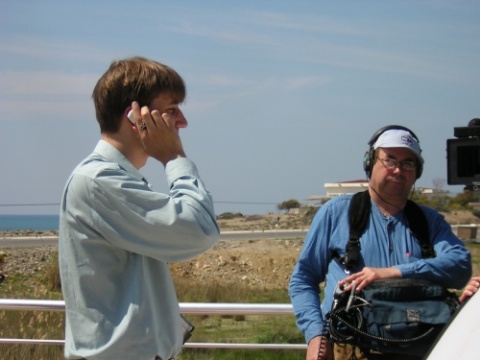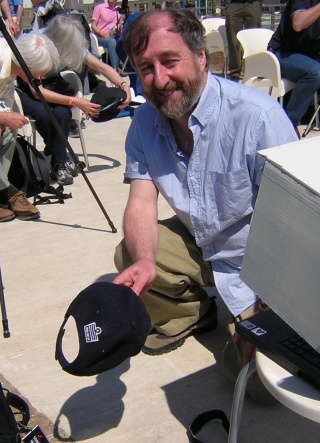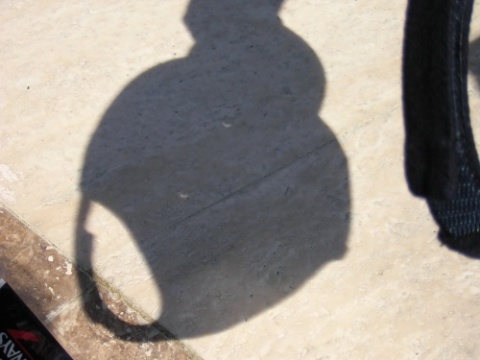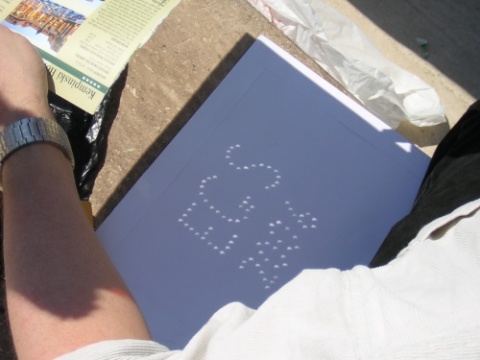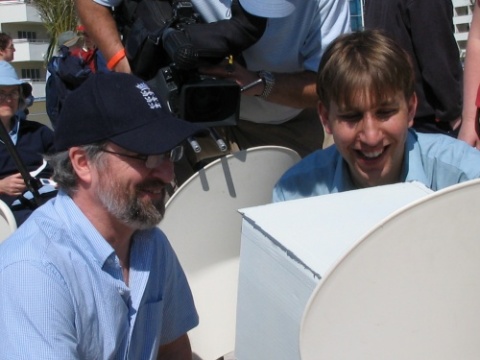|
|
|
|
The location was at Kizilot near Antalya on the southern coast of Turkey a few km east of the centre line. The huge hotel was packed with astronomers and eclipse chasers and the day of the eclipse dawned fine and sunny with only a few clouds over the distant mountains |
|
|
|
|
|
Totality lasted 3 min 40sec from 10:55:25 UTC This image is a stack of video frames from totality showing the outer corona. Click on the image for a video (mpeg 1.5Mb) of start and end of totality (2nd and 3rd contact) |
This is the webcam zero order spectrum image at the end of totality (3rd contact) showing Baily's beads as the chromosphere shines through the Lunar valleys. |
|
|
|
|
The International Space Station was in the vicinity at the time of totality. In this snapshot taken from the station, the Turkish coast is in the shadow while the northern coastline of Cyprus can be seen at the bottom of the image. (Copyright NASA) Although the ISS was not spotted from the ground, Venus was visible in the West well before totality and Mercury was spotted during totality, half way between Venus and the eclipsed sun. |
The orbiting Solar and Heliospheric Observatory (SOHO) can image the outer corona without an eclipse but is unable to image it close to the sun. This image is a composite of the outer corona from the Lasco C2 camera with the inner corona from the video camera superimposed and filling in the missing gap. |
|
|
|
|
People observed from the beach, the hotel grounds or from the upper level of an amphitheatre in the hotel grounds. My gear is visible on the wooden tripod at bottom left. |
The amphitheatre was ideal for astrophotographers who did not want to risk taking their equipment onto the beach. It afforded good views both inland and towards the sea. |
|
|
|
|
A group of eclipse chasers from the USA being interviewed by the BBC Sky at Night TV team. |
Chris Lintott, co-presenter of The Sky at Night phones Sir Patrick Moore who observed the partial eclipse from the UK. |
|
|
|
|
The ventilation holes in my cap make a simple eclipse viewer as totality aproaches.
|
|
|
|
|
|
Other pinhole viewers were a bit more creative! |
Chris Lintott and I discuss the spectroscopy results after 3rd contact |
